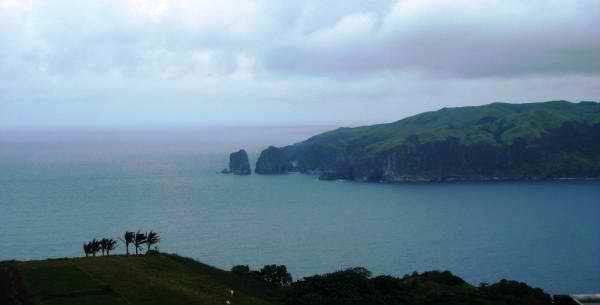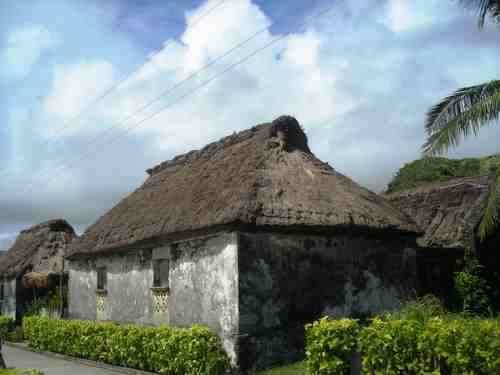Batanes: A timeless world where culture tames nature

By Lailany P. Gomez
Where the Pacific Ocean unites with the South China Sea is a paradise called Batanes. It is a unique place associated with peculiarity. The island’s isolation has preserved its enchanting charm. Lying 860 kilometers north of Manila, Batanes is bounded by the Bashi Channel on the north, by the Pacific Ocean on the east, by the South China Sea on the west, and by the Balintang Channel on the south.
The smallest among all the provinces in the country, Batanes has a total population of about 16,000 scattered across a land area of 230 square kilometers. It has six municipalities, 29 barangays and one congressional district.
The municipalities are Ivana, Uyugan, Mahatao, the capital town of Basco and Sabtang and Itbayat, both island municipalities. These islands are characterized by verdant rolling hills, rugged cliffs and black and white sand beaches dominated by large rock formations.
Basco is the most populated with 7,000 people. It is the center of commerce since the airport and main seaport are located here. You will enjoy utilities like electricity, mobile-phone lines, cable television and Internet connection in the capital town.
Don’t be surprised, though, if you will open the radio and hear Chinese-speaking people on the air since Basco is just 190 kilometers south of Taiwan. There are no luxury cars in Batanes, and only bicycles and scooters dominate the cement-paved streets.
Another mode of transportation to get you moving around Batan Island is a 40-seater jeepney that plies the Basco-Itbud-Basco route. Minimum fare is nine pesos and fifty centavos for the 23-kilometer Basco-Itbud stretch.
The island municipality of Itbayat is the largest among the three inhabited island of Batanes. The major produce of the island include garlic, pineapple and coconut trees. Itbayat is also home to coconut crabs. Coconut crabs, or tatus in the vernacular, are known for their ability to crack coconuts with their strong pincers to eat the contents.
Batanes has a lot to offer other than heavy storms it has become known for.

The Ivatans, or the people of Batanes, for one, are one of the main attractions. They are traditionally polite, honest and peace-loving people. They can be found greeting visitors and tourists roaming around the islands. They are also a boat-making and seafaring people, and they trade with neighboring Taiwan to the North and Cagayan to the South.
The Ivatans love the land and cultivate many plants for food. For them, farming means growing root crops—often just enough to feed their family. The uniqueness of Ivatans is curtailed without mentioning the vakul. It is a headgear made from dried vuyavuy fiber. It is used to protect them from rain or heat of the sun. Vuyavuy, however, is a palm that can be found only in Batanes.
Old women of Chavayan in the island of Sabtang weave the vakul which takes three weeks to a month to craft but can last a lifetime. A yuvuk, according to Irene Gonzales, the mother of handicrafts, is the native basket of the Ivatans. It contains their belongings for farming. Sometimes it is also use as a baby carrier. A yuvuk is made from nito vines and vayasuvas grass gathered only in Mount Iraya.
A dormant volcano that has last erupted some 400 years ago, Mount Iraya serves as a backdrop to the 1,250 meters threshold-to-threshold sloping runway of the Basco airport. Unfortunately, the airport’s runway condition is the reason larger aircraft cannot land here.
Although it is almost always raining, from the minimum of eight days to a maximum of 21 days a month, the best time to visit after summer is during the months of September to October when an “Indian summer” takes place. It is the time when the weather is sunny and warm which can last for a few days to a week or more.
Sabtang Island is a 30-minute boat ride from the Radiwan Point at the Ivana Seaport. It is known for its steep mountains and deep canyons that earned its name as the “New Zealand of the Philippines.”
Sabtang is also home to most of Ivatans’ legacy—the lime and stone houses. These houses can withstand the hardest of winds during typhoons. A distinct lime and stone house has two separate structures—one for the living room and sleeping area and the other for kitchen and bathroom. They are characterized by how the roofs are done. The overall structures of the house are almost uniform as with the other houses. You can easily guess that the windowless wall is facing where the direction of the strong winds are blowing from.
Old churches are also a must see in Batanes. These churches are built as early as 1783. The Basco Cathedral can be found at the town’s capitol. It is the oldest among the churches scattered over Batanes.
The local government of Batanes is promoting the island as an eco-tourism destination to generate revenue and employment for the Ivatans. I hope it gives due consideration to protect and conserve the Ivatans’ cultural and natural heritage, while granting host community equal participation in the broad-based, sustainable development of the whole Batanes province.